The Performance Refinery brings Radial Shockwave therapy into the practice for our patients.
What Is Shockwave Therapy?
When you hear the term “shockwave therapy,” what does it make you think of? Does it sound like something out of science fiction? Maybe you have an image of old electroshock therapy beds when you hear the term.
Shockwave therapy is nothing like electroshock. This therapy sends high pressure sound waves in the form of a series of energy pulses, directly to the site of pain or injury through the patient’s skin, instead of electrical currents through your body. The Shockwave therapy machine uses a handheld device/s with a swift-moving projectile that a compressor controls. With this projectile, the system transmits energy to the applicator that generates shockwaves via a series of energy pulses directly to the site of pain or injury through the patient’s skin. The therapist can adjust the frequency and pressure of those waves.
Its main purpose is to help regenerate damaged or affected tissues. Because of this, these devices have several beneficial effects. One leading benefit is improved blood circulation and neovascularization. This means that the device allows the natural formation of new blood vessels. Furthermore, it increases growth factors in your body. These shockwaves can help to reduce pain by creating substance P and hyper-stimulating pain sensors. As this occurs, the body restores the affected tissues.
Shockwave therapy applies a series of sound wave energy pulses directly to the site of pain or injury through the patient’s skin. It is an effective treatment for musculoskeletal conditions that involve ligaments, tendons, bone and other connective tissue.
High Energy or Low Energy?
Focus high energy shockwave therapy (ESWT) uses short pulses of a high pressured amplitude that break the sound barrier, which results in a shockwave. High energy shockwaves focus directly on the treatment site. Low energy shockwaves (RSWT) are actually pressure waves. A radial pressure wave travels more slowly and doesn’t break the sound barrier like a “true” shockwave. Low energy shock waves are longer, slower, and less intense than high energy waves. They also spread over a wider treatment area.
The circumstances of each patient’s situation will determine whether high or low energy shockwave treatment is likely to get the best results. ESWT is more expensive and requires the use of anesthesia. For most Physiotherapy applications, low energy is a better option. It’s more affordable, and it provides good results when treating a variety of conditions.
When do you use Shockwave Therapy?
Some of the conditions that shockwave therapy can treat include:
- Heel spurs
- Plantar fasciitis
- Achilles tendonitis
- Tennis or golfers elbow
- Calcific tendonitis
- Patellar tendonitis
- Bursitis
- Shin splits
- Iliotibial band friction syndrome
- Chronic muscular pain
- Back pain in the lumbar and cervical regions
- Thumb basal joint arthritis / rhizarthritis
- Fracture repair
The US Food and Drug Administration (FDA) has approved some of these applications, including for plantar fasciitis and tennis elbow.
How many Sessions will I need?
Most patients will have 1 session a week for 3 to 6 weeks. Each session lasts for between 5 and 15 minutes, depending on the strength of the shockwaves and the part of the body receiving treatment. Most patients will feel the benefits of shockwave therapy within the first 3 weeks. Other patients may take longer to start feeling results. If you aren’t feeling any benefits from your therapy, then it’s important to discuss this with your physiotherapist. It may be that you need the intensity of your shockwave treatment increased.
What are the benefits of Shockwave Therapy
Shockwave therapy is especially useful in treating chronic conditions that haven’t responded to other treatments. Shockwaves are non-invasive treatments and are often a good alternative to surgery.
For example, surgery for plantar fasciitis requires a recovery time of at least 3 weeks. Infection and nerve damage are some of the possible risks.
In contrast to surgery, the side effects of low energy shockwaves are mild. The treatment can cause some mild discomfort with the patient possibly experiencing soreness, tenderness, and swelling after treatment. These reactions are temporary.
Low energy shockwave therapy doesn’t require the use of drugs or anesthesia meaning that patients can return quickly to most regular activities after treatment. Athletes often continue training while undergoing a shockwave therapy regime.
Potential Shockwave Therapy Side Effects
When it comes to side effects, one of the first things people ask is ‘is shock wave therapy painful?’ The answer is that it can be, and a lot of this depends on how intense the wave frequencies you’re using are.
Shockwave therapy can cause pain, mainly because it stimulates inflammation in the targeted area. This is important for the healing process but can be uncomfortable.
Fortunately, you can manage the discomfort caused by lowering the frequency of the waves during a treatment. This will mean you have to have longer treatment sessions or more of them. However, it will mean you feel comfortable during them.
Other potential side effects of shockwave treatment include:
- Mild bruising
- Numbness or tingling in the targeted area
- Swelling
These side effects shouldn’t last long, and most people don’t need to take time off work to recover from shockwave treatment. If your treatment covers a large area of your body or affects an area you use a lot at work, then you may want to take the day off.
Who is not eligible for shockwave treatment
This includes anyone who:
- Has a circulation or nerve disorder
- Has an infection in the affected area
- Has, or has had, a bone tumor
- Has a metabolic bone condition
- Are pregnant
What to expect post Shockwave therapy treatment
The recovery time from shockwave therapy is also minimal. In fact, most people can walk in and out of their appointment in the space of an hour!
All side effects should wear off after 48-hours, but you can also take pain relief medication to manage them. However, it’s important that you don’t take anti-inflammatory medication, such as ibuprofen. This will slow down the healing process and make your treatment less effective.
Ice also acts as an anti-inflammatory, so make sure you keep ice packs off your treated area after your appointment.
You should be able to go back to work straight away without any difficulty. That said, it is important that you don’t engage in any strenuous or high-impact activities for at least 48 hours.
Beyond that, you’re good to go!






